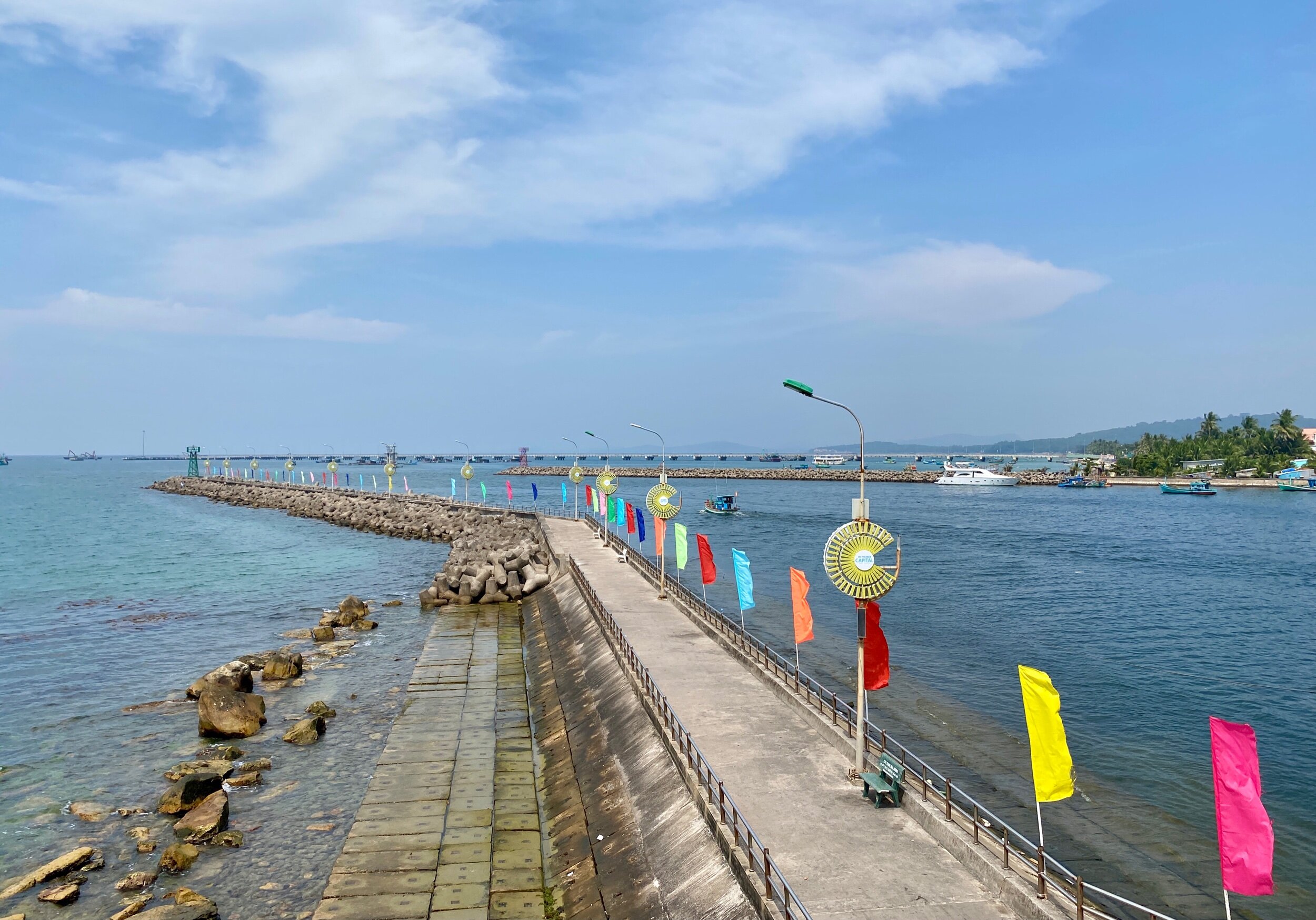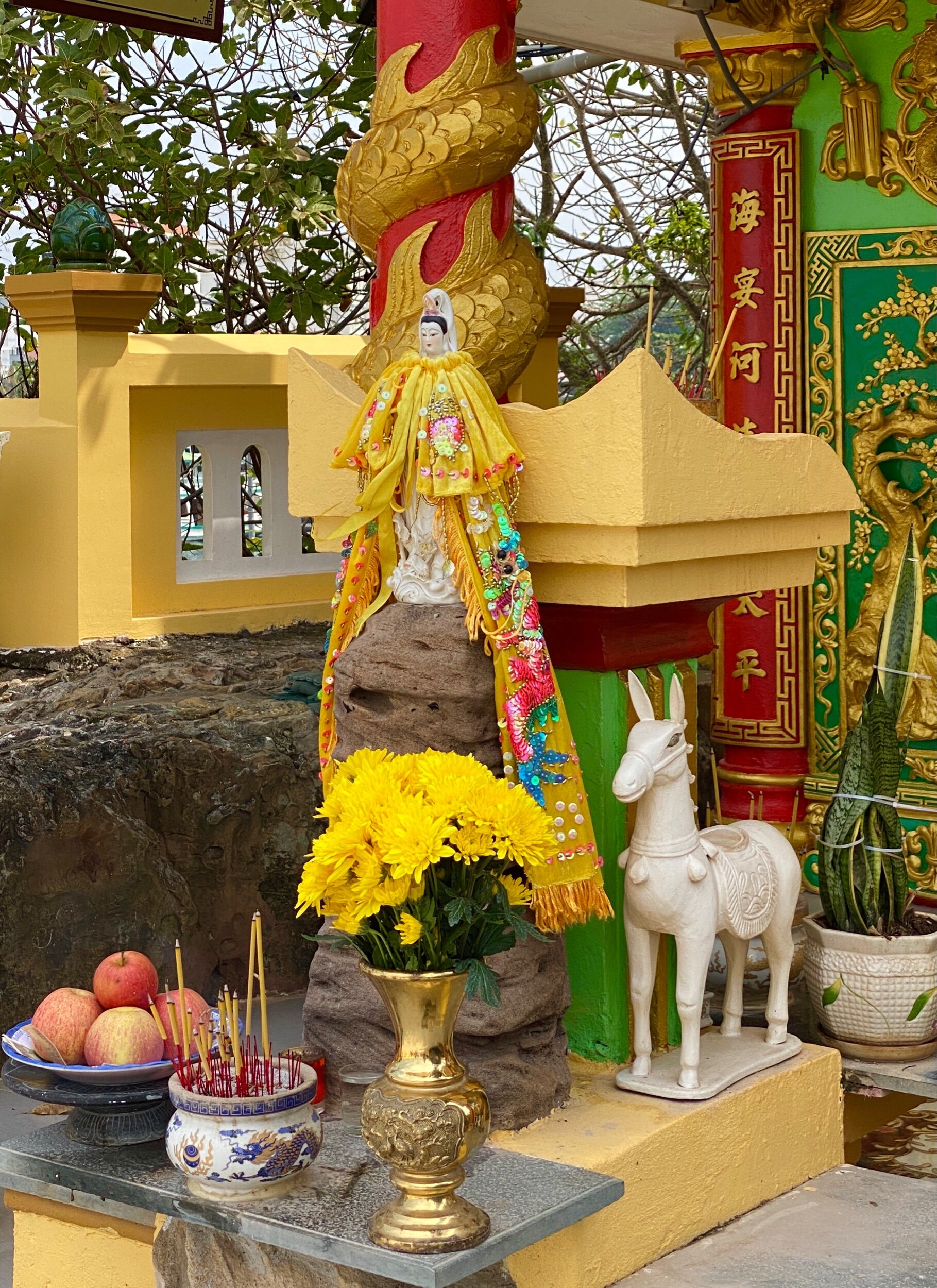Famous Houses of Worship on Phú Quốc | Vietnam
1. Sùng Hưng Cổ Tự
This is the oldest site of worship on the island, with two temples and a graveyard here stretching back to time immemorial. The current pagoda dates from the late 1800s, though it’s so well kept that nothing here is actually old; I think every single tile and piece of furniture has been replaced, one by one, over time. It’s still a very active place of worship, but honestly not worth a visit unless you happen to pop by on the way to something else.
2. Cao Dai Temple
I was never aware of Cao Dai until visiting Vietnam. Cao Dai is a modern syncretic religion, founded in southern Vietnam in 1921, with the central tenet that all religions are timely, topical manifestations of one great power on high, Cao Dai. Of course, the Cao Dai religion is the third and final revelation from Cao Dai. In temples, Cao Dai is represented by the all-seeing eye.
In combining Buddhist, Hindu, Confucian, Daoist, Muslim and Catholic beliefs, Cao Daiists have come to worship a pantheon of immortals and saints, from Guan Yin to Joan of Arc. And because the Vietnamese founders were themselves mediums receiving psychic messages from ever more immortals as to how best expand their church, these immortals tend to be literary and political figures they would have encountered in their education or during their lifetimes: Shakespeare, Victor Hugo, Lenin, Sun Yat-Sen, Winston Churchill, etc.
The idea of psychically contacting Lenin and Churchill during a séance to brainstorm how to draw more congregants tickles me! Yet Cao Dai is the third largest religion in Vietnam, following omnipresent Buddhism and a small but old Catholic minority. Most of its growth happened extremely quickly, with a million followers joining in the twenty years between its founding and the end of World War 2/beginning of the First Indochina War. Cao Dai sided with the French, then Americans, and were consequently banned following reunification in 1975, but allowed again during the capitalist shift in 1997. Today there are around 3 million Cao Daiists worldwide, due to the emigration of Vietnamese worshippers following those wars.
I swear I was told multiple times that Cao Dai began on Phu Quoc, and that’s why it was important to visit the temple. Of course, a quick google dispels that notion. Perhaps one of the founders was born here? Or maybe the religion is dominant here, where elsewhere it’s a tiny minority?
Graham Greene described Cao Dai temples as “the full Asiatic splendor of a Walt Disney fantasy,” and I found that to be true. I don’t believe this one to be a particularly compelling example, but it is steps from the market, so not much effort is required to look.
3. Dinh Cậu
There has been some sort of worship site here since the 17th century, but the current small temple was built in 1937. This is where fisherman about to leave for long trips come to pray to the goddess of the sea, as well as Cau Tải and Cau Quy, the two Buddhist protectors of fisherman and other seafarers.
The surrounds have been built up a lot over the past ten years or so, with a long jetty, big parking lot, and paved street where there was once just a beach and some rocks. Comparing what I saw to old photos, the expansions have made the place far less picturesque. It’s still worth checking out because it’s a good view and in the center of town.
So, in my opinion, none of these are worth going out of your way to see, but, due to their convenient locations, you might as well.


























